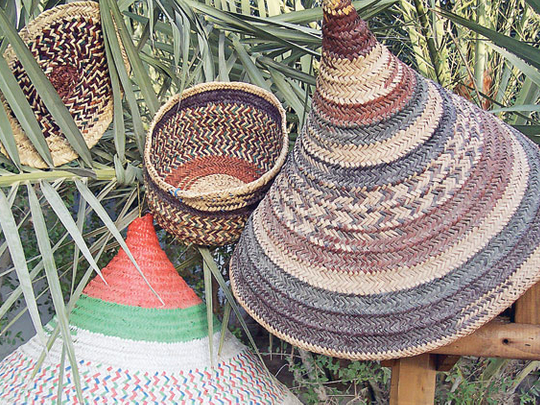
Dubai: The UAE's history has ample evidence of the Emirati woman's role as not being limited to that of a housewife and a mother. In fact, there was strong self-esteem that motivated her to broaden the circle of attention and made her come up with various home-based businesses.
Her contribution goes back to the early 1900s but according to some elders, the dates can be even earlier than this. The toughness of life during that era made her search for alternative tools that would enable her to earn her own living independently from her father or husband. So, she tended to discover ideas from her surroundings such as outfits, the tools used at home, and soon she began to translate her ideas to reality.
The palm tree was a great inspiration. She made a traditional food coverings, locally known as mughta, to cover the food, as also the small round hand fan known as meshab. It was also used for other items, such as spacious baskets known as ghuffa, which come in different designs and colours. She also made her abaya and simple dresses with embroideries locally known as talley and mukhawar, which were very popular in the past. Sometimes, her imagination inspired her to use glossy buttons to decorate wedding gowns.
The burqa was another part of the woman's apparel that was made at home. It was on the top of Emirati women's priorities because they weren't allowed to leave the house without it. The Emirati burqa was made of black glossy and sometimes mat material, a thick thread to tie it behind the head in order to be fixed properly on the face, and a small stick that used to be fixed in the middle. The sticks most commonly used were from ice cream lollies. They asked their children to keep the stick after finishing the ice cream, and after several sticks were collected, they started making burqas for their clients.
In addition, her business mind guided her to invest in food. The traditional Al Qaimat, bethitha, asida, khubisa, kubz regag and other items were particularly popular.
Promotion and sales
To promote her business, she used to visit her friends to spread the word. Once they liked her work, they would ask her to make a specific quantity, and then negotiated on delivery modes and payment.
As part of her daily routine, she used to pack her wares in a fabric, carry it over her head around her neighbourhood.
Even to this day, there are several Emirati women who actively work from home. The traditional forms of livelihood have given way to the hairdresser, make-up artist, fashion designer, henna artist and cooks, all of whom work from home with success.








